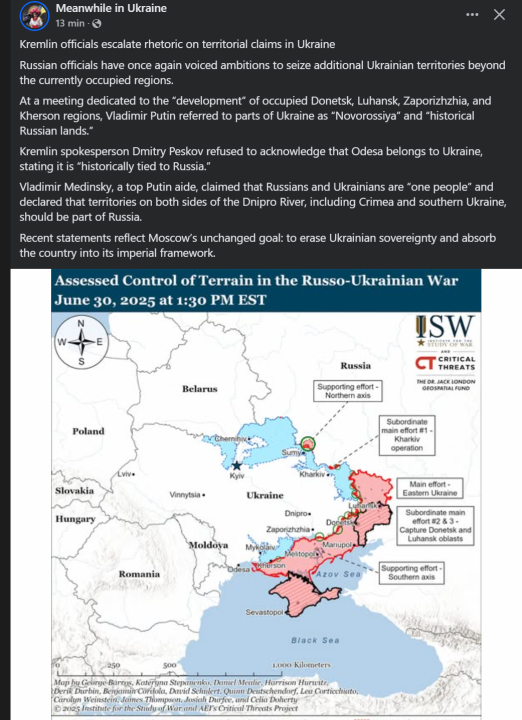All aktivitet
Denne strømmen auto-oppdateres
- Siste time
-
Kopi av testen. Ville jeg vært fornøyd med om det er typ 3 mnd siden. Når det gjelder batteri, er dette en av de som har fått byttet batteri? Om det er papirer på det, så hadde jeg ikke vært veldig bekymret. Er det forhandler selv som har utført testen, så ville jeg egentlig bedt om å få tatt test hos 3.part (NAF) uansett. Bare for å ha dobbeltsjekket at de ikke holder ting skjult, eller rett og slett har oversett noe. Er ikke snakk om å mistro forhandler, men å sikre seg. Selv om man tror og tenker det er en seriøs forhandler, så vet man jo egentlig ikke for sikkert. Reaksjonen i seg selv er uansett et godt grunnlag for å si om man tar den testen eller ikke. Er forhandler trygg på egen jobb, har han selvsagt ingen problemer med det. Useriøse forhandlere vil dog fort blåse seg opp eller på annen måte fraråde deg dette. Kjører selv en 19-mdell, og er ganske sikker på at den med jevnlig vedlikehold vil glatt holde i 10-12 år før rusten ev. begynner å merkes mer enn ønskelig. Selv har jeg beregnet med 10 år i budsjettet, og tar ett hvert år over det som bonus budsjettmessig.
-
Sol i mot, det er en elendig unnskyldning, det som sies er at denne personen ikke ser, men kjører på likevel, det lover ikke godt, og fra det lille jeg ser om dette så er førerkortet helt riktig beslaglagt. Det er dog sant at om man ikke går av sykkelen e.l ved overgang så faller mer av ansvaret over på føreren av sykkelen e.l. Jeg kjenner ikke sannheten bare påstandene, så får vi se hvem som har mest skyld i dette, men herre satan min skaper, skylde på sola, det lover ikke godt for bilsjåføren.
-
Denne du sikter til muligens? https://www.edn.com/toyotas-killer-firmware-bad-design-and-its-consequences/ 20 år gammel bil det gjelder men selvsagt relevant fortsatt. De som ikke skriver kode i det daglige ville blitt forferdet av hva som finnes der ute. Jeg er ikke overrasket.
-
https://warontherocks.com/2025/06/i-fought-in-ukraine-and-heres-why-fpv-drones-kind-of-suck/ En meget interessant artikkel om realitetene; det vises at FPV-dronene ikke lenge er så suksessrikt som før, og er noe mer kostbart - 500 dollar per stykke - og mer ofte enn ikke benyttes i oppfølgningsangrep på mål som enten var først angrepet eller skadd. In 2024 and 2025, I served for six months as an international volunteer on a first-person view attack drone team in the Armed Forces of Ukraine. My team was deployed in the Donbas region, in one of the hottest sectors of the front. When I joined the team, I was excited to work with a cutting-edge tool. By the end of my deployment, I was a bit disillusioned. Let me tell you why. First-person view drones are unmanned aerial vehicles with four propellers located at the four corners of the craft, roughly in the shape of a square of seven to 12 inches in length on each side. They are controlled by an operator wearing virtual-reality goggles that receive the image from the drone’s forward-facing camera (hence the name first-person view). The most common types of first-person view drones are single-use: They fly directly into their target, where they detonate an explosive charge of up to 1.5 kilograms. These drones are touted as a cheap and accessible solution that can give troops on the tactical level their own organic precision-strike capability. They can supposedly react quickly and strike moving targets or targets in difficult-to-reach locations, such as bunkers, basements, or inside buildings. Proponents of first-person view drones often repeat the claim that as much as 60 to 70 percent of all battlefield casualties in the Russo-Ukrainian War are now caused by drones. This statistic is probably broadly accurate, though it does not differentiate between casualties caused by first-person view drones and other types of uncrewed aerial systems. Some authors, including experienced military officers writing in these pages, go even further and claim that first-person view drones will precipitate a revolution in how wars are fought, akin to the introduction of muskets. Among other things, they will make concealment and the massing of troops and equipment in the combat zone nearly impossible. Any concentration of troops or vehicles will supposedly be observed immediately and butchered by swarms of cheap, fast drones. Proponents of drones, especially in Silicon Valley, have claimed that drones might completely replace artillery. Whether or not we believe these far-reaching claims, we’ve certainly all seen the videos on social media of these drones performing impressive, highly precise attacks. We’ve seen them striking a Russian tank on the move, flying through the open back hatch of an infantry fighting vehicle, or entering a building to surprise the enemy, sometimes literally, with their pants down. But those impressive strikes are rare exceptions. The cases when first-person view drones actually do that are few and far between. During my time in Ukraine, I collected statistics on the success of our drone operations. I found that 43 percent of our sorties resulted in a hit on the intended target in the sense that the drone was able to successfully fly all the way to the target, identify it correctly, hit it, and the drone’s explosive charge detonated as it was supposed to. This number does not include instances when our higher command requested a sortie but we had to decline because we knew that we could not strike the target for reasons such as weather, technical problems, or electronic interference. If this type of pre-aborted mission is included in the total, the success rate drops to between 20 and 30 percent. On the face of it, this success rate is not bad, but that is not the whole story. I began to notice that the vast majority of our sorties were against targets that had already been struck successfully by a different weapons system, most commonly by a mortar or by a munition dropped by a reusable drone (in other words, not a first-person view drone). Put differently, the goal of the majority of our missions was to deliver the second tap in a double-tap strike against a target that had already been successfully prosecuted by a different weapons system. The proportion of missions when we successfully carried out a task that only a first-person view drone can fulfill — delivering a precision strike on a target that could not be hit by other means — was in the single-digit percent. There are two reasons why these drones rarely successfully do what they were designed to do. The first has to do with how commanders choose to employ first-person view drones. Presumably, our commanders decided that they had first-person view drones as a capability, so they might as well use them, even if there were other weapons systems that could also do the job. There is a certain logic to this, and the commanders were not paying for the expended drones out of their own pockets. They were more focused on the immediate mission. While first-person view drones are cheap, they are usually not the cheapest option available to commanders. This is the problem with using them in double-tap strikes or for missions that can be achieved by other systems. One of these drone sorties costs about $500 in materiel. A mortar shell costs less than $100. A munition dropped from a reusable drone, usually also something like a modified mortar shell or 40-millimeter grenade, also costs less than $100. The second reason why these drones rarely do what they were designed to do is technical. They are finicky, unreliable, hard to use, and susceptible to electronic interference. Few first-person view drones have night-vision capability. Those that do are in short supply and cost twice as much as the base model. In Ukraine, in the winter, it’s dark for 14 hours a day. Wind, rain, snow, and fog all mean a drone cannot fly. A solid quarter of all these drones have some sort of technical fault that prevents them from taking off. This is usually discovered only when they are being prepped for launch. The most common is a fault in the radio receiver that receives inputs from the control panel, or in the video transmitter that transmits the signal to the operator’s virtual-reality goggles. Sometimes this fault can be fixed through a software update in the field. Often, it cannot. Many faulty drones are simply cannibalized for spare parts, because there is no better use for them. Even once a drone is airborne, batteries often die mid-flight. In about 10 percent of sorties, the drone hits the target, but its warhead does not detonate. Once airborne, operating a first-person view drone successfully is not easy. These drones were originally designed to be toys for rich people. Before they were press-ganged into service as tools of war, they were used either in aerobatic displays or in races where a group of operators would compete in flying through an obstacle course. In either case, the drones were not meant to be easy to fly. They were meant to be highly maneuverable, but also unstable. First-person view drones cannot really hover, fly slowly, or linger above a target. The assumption among hobbyists is that enthusiasts will invest the time and money to become proficient at flying. As a result, training a highly proficient operator can take months. A standard, base-level course for Ukrainian drone pilots takes about five weeks. The quality of operators it prepares is questionable, and graduates of the course need extra on-the-job experience to become truly proficient. Most drone pilots I encountered did not go through this course. Instead, they learned to fly drones on the job. Even experienced operators routinely miss their targets and crash into trees, power lines, or other obstacles. To keep costs down, the first-person view drones used by Ukrainian forces have no navigational aids, such as a compass, a GPS receiver (though it should be noted that using GPS often would not be possible anyway due to widespread GPS signal jamming), or an inertial navigation system. The operator relies on their knowledge of the local terrain and on verbal instructions from a navigator, who usually has access to the video from the first-person view drone itself and from other reconnaissance assets that are tracking the target. But the greatest obstacle to the successful use of these drones by far is the unreliability of the radio link between the operator and the drone. One of the reasons why hitting a target at ground level with precision is difficult is that when first-person view drones get close to the ground, due to obstacles, they start to lose their radio connection to the operator, often located up to 10 kilometers away. In some cases, drones cannot attack a target if it is simply on the wrong side of a tall building or hill because the building or hill blocks the line of sight between the drone and the operator. Sometimes, the operator can work around the loss of signal close to the ground by climbing, pointing the drone at the target, and hoping inertia will take it to its target once they have lost control. When striking a small target like a doorway, a window, or the entrance to a basement, this degrades precision significantly. Drones also operate in a cluttered segment of the electromagnetic spectrum. First-person view drones use unencrypted analog radio signals, and in hot parts of the front, as many as a dozen drone teams may be competing for use of a handful of frequencies (a consequence of using cheaper components). This results in the need for sophisticated de-confliction procedures that, quite simply, do not always work. Even when de-confliction works, sometimes a team must wait as long as half an hour for a frequency to become available before takeoff. If it does not work and two drones find themselves in the air on the same channel at the same time, they will interfere with each other’s signals, usually resulting in a crash. On top of that, the enemy’s drones also fly on the same frequencies, which can also result in interference and a crash. Interference from another drone, whether friendly or hostile, resulted in the failure of at least three percent of our missions. In addition to interference and the physical limitations of radio communication, first-person view drones are also highly susceptible to electronic-warfare jamming. Both sides of the Russo-Ukrainian War make extensive use of jamming. When our side turned on its jammers, they usually informed us in advance. That meant our drones simply could not take off, sometimes for a period of several hours. About three percent of our sorties failed because we did not get advanced warning that our own jamming systems would be operational, causing our drones to fall out of the sky. On top of that, sometimes, even the best efforts at de-confliction were not enough, simply because Ukrainian infantry or individual vehicles are often equipped with small portable jammers. When they heard a drone, they simply activated the jammer without waiting to find out whether the drone was friendly or not. Of course, when the other side activated its jammers, we got no advance warning whatsoever. Enemy electronic warfare downed a full 31 percent of our sorties. This number could have been lower, but for our command’s occasional stubborn insistence that we fly even though it was almost certain that enemy jammers were operating in the target area. When enemy jammers were operating, the enemy’s own drones also could not fly, putting them in the same dilemma that our side also suffered. Nevertheless, when jammers were available and switched on, first-person view operations became effectively impossible. Some of the problems with first-person view drones will eventually be resolved as technology matures. Better production standards will ensure that a larger percentage of drones actually take off. In Ukraine, there are countless assembly lines that build drones from cheap, off-the-shelf components sourced from dubious suppliers. A single unit often sources its drones from numerous organizations, each with its own production processes. More standardization, better quality control, and less reliance on cheap components could improve reliability. Better transmitters and receivers that are more resistant to interference will improve the connection between drone and operator. Digital signal transmission and frequency hopping are starting to appear in some first-person view drones, though these are still rare. Putting re-translators that amplify the drone’s signal on a second drone that hovers somewhere between the operator and the first-person view drone can also improve the quality of the connection. Improved and standardized procedures for training operators would cut down the time needed to become proficient. To be sure, the technology has already evolved since I left the battlefield. Today, some Ukrainian and Russian units are also using drones controlled by fiber-optic cable, rather than radio, though I had no personal experience with this type of drone in my unit. This technology is often touted as the next step in the evolution of drone warfare. It would seem to address some of the major problems with radio-controlled drones I experienced, and compared to radio-controlled drones, fiber-optic drones may indeed have a number of advantages. Fiber optics make jamming impossible and deconflicting frequencies unnecessary. The absence of an energy-guzzling radio transmitter can extend battery life and even allow for some innovative tactics, such as landing the drone next to a road and waiting for several hours until a vehicle passes by. Fiber optic drones do, however, have a number of drawbacks that mean they might not fully replace radio-controlled drones. The wire that connects the drone to the operator limits the maneuverability of the drone. Snagging it on any kind of obstacle can result in a loss of control. Fiber-optic drones cannot really double back over their route or circle a target, as this could tangle their control wire and also result in a loss of control. As a result, fiber-optic drones are said to be even more difficult to fly than radio-controlled drones. Because of these limitations, several drone operators I spoke to actively resist using fiber-optic drones. Furthermore, though cost will probably come down, at present the cost of the cable means that a fiber-optic drone with 10 kilometers of cable costs about twice as much as a radio-controlled model of similar range. Finally, production capacities available to Ukraine for fiber-optic cables are, at present, fairly limited compared to radio-controlled drones, meaning they are chronically in short supply. All that said, if a member of a NATO military were hypothetically to ask me whether NATO countries should acquire first-person view drone capabilities, based on my experience and given the current state of the technology, I would probably say no, whether they are radio-controlled or fiber-optic. The vast majority of first-person view drone missions can be completed more cheaply, effectively, or reliably by other assets. Furthermore, other authors have noted that drones still do not come close to matching the effects that can be achieved by massed artillery fires. Additionally, experts on artillery systems consistently note the greater reliability and range of artillery. Scaling up drone use would also involve scaling up the drones’ logistical tail. This means more complicated and expensive logistics for drones that would compete for resources with other types of weapons. For the time being, first-person view drones are unlikely to fully replace other weapons systems. No military leader is yet seriously advocating doing away with artillery completely in favor of first-person view drones. This means that the military will have two competing logistical tails: one for first-person view drones and one for artillery. For sophisticated NATO militaries, instead of investing heavily in the development of first-person view drone capabilities, I would, first of all, recommend ensuring that troops in the field have well-trained organic mortar support with an ample supply of ammunition. Mortars, like artillery, can’t be stopped by bad weather, jamming, or crowded frequencies. Nor can they be impeded by the dark. A well-trained mortar crew can reliably put rounds on a target in less than five minutes. Our first-person view sorties took about 15 minutes from the initial request to the moment the drone struck the target, and that was only when conditions were optimal. A mortar’s price per shot is lower than a first-person view drone. Drones can nominally have an advantage over mortars in range, but this is variable and depends on the terrain, the specific location of the mortars relative to the drone launch site, and the deployment of intelligence, surveillance, and reconnaissance assets that find the targets for drones or mortars. In practice, I don’t remember a single case when we struck a target that was beyond the range of mortars, and we certainly never struck a target that was beyond the range of artillery. Secondly, for the rare cases when troops actually need tactical-level, organic precision-strike capability, and when actually carrying out such a strike is feasible, I would recommend something a little bit more high-end than a first-person view drone. NATO countries and their allies already produce high-quality loitering munitions, like the Switchblade. Such loitering munitions provide greater precision in day and night, more ease of use, and higher resistance to electronic interference than first-person view drones. They are also more expensive, but their cost is, like first-person view drones, coming down. The investment in quality seems to justify the greater expense, especially since, at most, one in ten first-person view sorties is a precision strike. Det mene at både FPV-dronen og fiberoptiske droner ikke er egnet for militær benyttelse for hender på profesjonelle militære med langt høyere presentasjonskrav. Da returnere man til "loitering munitions", dvs. flygende våpensystemer ment for søk-og-ødelegge oppdrag på slagmarken. Switchblade har vist hvordan det skal gjøres, og ettersom mortervåpenet er så viktig, må det da betyr at man burde ta opp det finske konseptet om presisammunisjon for morterskyts. Hvis det er mulig å bruke presisammunisjon med 81mm morterskyts trengte man ikke å sløse bort så mye som ni av ti granater for fulltreff. FPV-teknologien har gjort dronevåpenet svært viktig, men for kamp på feltet mener det mer hardføre, allsidige og pålitelige våpen med høy treffsikkerhet. Da er FPV-droner og fiberoptiske droner ikke svaret. Der virker det som at artilleriet ikke er avsatt fra sin trone som slagmarkens dronning.
-
Alle snakker om det men ingen gjer det. Er det noken som lagrer overskuddsenergi som hydrogen?
-
Tenker det er mest negativt for din egen del, spesielt om du har ønske om egen familie på et tidspunkt? Jeg ser ihvertfall ikke på det at du har liten erfaring som negativt her, men heller det at du har kommet litt opp i åra nå som gjør at egen familie kan begynne å bli vanskelig. De fleste ønsker jo å lære noen å kjenne en stund før de tar valget om å starte egen familie sammen, og da går det endel tid til det også, hvis man er på jakt etter noe seriøst.
-
oddeh begynte å følge skittent murgulv balkong
-
Høytrykkspyling.
- 1 svar
-
- 1
-

-
Fin og god tirsdagsmorgen ❤️❤️
-
Ja de fikk nok det
-
Vi ønsker dere også en fin og god Tirsdag ❤️❤️
-
Ja skal sjekke ❤️❤️❤️❤️
-
skittent murgulv ja, skitten liksom nedi betongen, ligger åpent for vind og vær, nytter ikke med vann og såpe og børsting, hva skal til? 😬
-
Kopi av testen. Ville jeg vært fornøyd med om det er typ 3 mnd siden. Når det gjelder batteri, er dette en av de som har fått byttet batteri? Om det er papirer på det, så hadde jeg ikke vært veldig bekymret.
-
Hva nøyaktig mener du er drastiske endringer? Eller? Eller? Dette er ikke noe å snakke om, minimale forskjeller, som ikke har noe å si for gameplay eller innlevelse, dette er storm i vannglass laget av samme incel folk som lager andre saker av ikke saker.
- 3 svar
-
- 1
-

-
For noen år siden i USA var det en sak i rettsapparatet mot Toyota, ifm at flere mennesker hadde opplevd at bilen akselererte uten at føreren hadde tråkket på pedalen. Der ble vel Toyota pålagt å la en uavhengig tredjepart få innsyn i source-koden til ECU'en (e.l.). Jeg er ikke sikker på om noe av den koden ble publisert, men den ble i hvert fall totalslaktet av dette analyse-firmaet for brudd på 'alle regler' for High Integrity Software. Jeg husker ikke hvordan saken endte, men det var mye som kom fram som ikke var til Toyotas fordel. Hvor mye innsyn har forsvarerne fått i ECU'en til VW i denne saken?
-
Tesla-Skam, reelt eller blåst ut av alle proporsjoner?
minim svarte på Auto Asmodeus sitt emne i Politikk og samfunn
Tror enkelte blir sjokkert faktisk -
De hadde dårlige erfaringer med Bombardier, mens Embraer hadde vært en suksess som sett hos Widerøe - og A220s største ulempe var at dens bakgrunn involvere Bombardier. Kanskje det er hvorfor bare 8 fly er sett i Skandinavia, bare som leiefly for diverse passasjerselskaper, til tross for meget sterk interesse i dansk-svensk regionalflytrafikk. I 2017 var det et ønske om å erstatte BAe 176 med C-series fly, som knapt to år senere kanselleres da Braathens lagt ned all regionalflyvirksomhet. Dette glemte ikke kanadierne som knapt overlevd kanselleringen. Så det var en rekke meget uheldige forhold i Skandinavia, selv om det er sterk interesse i A220-flyet som er mer kapabelt enn Embraer ved å ha større skrogsbredde. Det som gjort at Embraer hadde kunne vinne, ved å tilby billigere fly - fordi de ikke påvirkes av Trumps tollsatsvanviddet.
-

Woke i moderne underholdningsindustri
Martelè svarte på Reg2000 sitt emne i TV-serier og -programmer
Haha. Jeg har lest at Reddit og Discord moderatorer er såpass upopulære at de er blitt en meme. Men her er realiteten: man er selv en del av problemet, om en tillater seg å la dem tråkke over deg. Om en ser en moderator misbruke "makten" sin og oppfører seg uanstendig, så push tilbake. Fortell dem at dette er uakseptabelt. Der føler jeg mange failer -
Veldig bra! Du får bare bestille økning ja, en flink vikar skjønner dette regner jeg med!
-

Russlands invasjon av Ukraina [Ny tråd, les førstepost]
Dragavon svarte i et emne i Politikk og samfunn
-

F@H Team "hardware.no" (lagnr: 37651)
MrHorgen svarte på Arve1234567890 sitt emne i Overklokking og entusiastbruk
Klienten er oppdatert. Nå skal den plutselig folde med CPU igjen. Hvordan skrur jeg av dette permanent? Kan jeg sette "resources" til 0 på denne?- 43 956 svar
-
- distribuert
- databehandling
-
(og 2 andre)
Merket med:
-

Tesla-Skam, reelt eller blåst ut av alle proporsjoner?
nebrewfoz svarte på Auto Asmodeus sitt emne i Politikk og samfunn
Jeg tror ingen vil bli overrasket om de akkumulerte salgstallene etter juli viser seg å være høyere enn de akkumulerte salgstallene etter juni ... -
145 093
-
Til det er mangelvare på andre halvdel av året. Hva nå? Uten noe som tar imot sol og vindkraft så stopper utbyggingen av sol og vindkraft.
-
AddelinT ble medlem
-
Ikke jeg. Jeg spiser pizza





.thumb.jpg.1adaeff974ddc870c2210821e943ca09.jpg)





